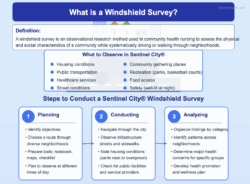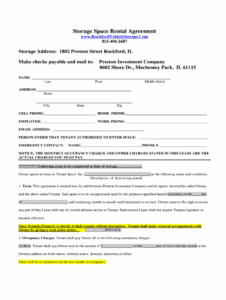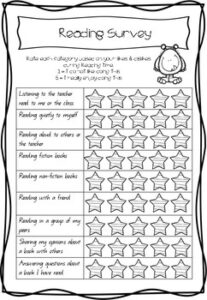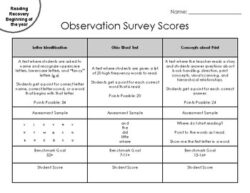Ever wondered how community health workers, urban planners, or passionate residents truly get a feel for a neighborhood’s pulse? It’s not just about looking at statistics or reading reports. Often, it starts with getting out there, driving through the streets, and observing with a keen eye. This hands-on approach is called a windshield survey, and it’s an incredibly powerful tool for understanding the visible aspects of a community.

A windshield survey is exactly what it sounds like: a systematic observation of a community from a vehicle (or even on foot, if preferred). It allows you to gather firsthand data on the physical environment, social structures, and general vibe of an area. But simply driving around isn’t enough; you need a structured way to record your observations. That’s precisely why a good community assessment windshield survey template is absolutely essential – it ensures consistency, comprehensiveness, and makes your data meaningful.
What Goes Into an Effective Windshield Survey Template?
Creating a robust windshield survey template isn’t just about listing random observations. It’s about categorizing and organizing what you see to paint a holistic picture of the community. Think of it as a guided tour where every detail tells a story. From the condition of homes to the presence of local businesses, each element contributes to understanding the strengths, weaknesses, opportunities, and threats within a given area. A comprehensive template helps you capture these nuances systematically.
When designing or choosing your template, you’ll want to ensure it covers several key domains. These typically include the physical environment, the social and economic aspects, and the resources available to residents. Neglecting any one of these can lead to an incomplete or skewed understanding of the community you are assessing. The goal is to collect enough data to identify trends, pinpoint areas of need, and celebrate existing assets.
Key Observational Categories
-
Physical Environment: This covers the basics you see around you. Are the streets well-maintained? What’s the condition of houses and buildings – are they new, old, dilapidated, or well-kept? What about open spaces like parks or vacant lots? Observe the cleanliness, presence of litter, and overall aesthetic.
-
Transportation: How do people get around? Look for public transit options like bus stops or train stations. Observe the flow of traffic, pedestrian walkways, and bike lanes. Is parking readily available? The accessibility and quality of transportation infrastructure can significantly impact a community’s vitality.
-
Safety and Security: Are there signs of crime, like graffiti or abandoned buildings? Do you see police presence? What about street lighting – is it adequate? Notice if people seem comfortable walking around, especially at different times of day. This category helps assess the perceived and actual safety of the area.
-
Health and Social Services: Look for clinics, hospitals, pharmacies, and mental health centers. Are there community centers, food banks, or places of worship? The availability and accessibility of these services are crucial indicators of a community’s support system for its residents.
-
Economic and Commercial Activity: What kind of businesses are present? Are there grocery stores, small shops, or large retail centers? What’s the general economic activity like – bustling, quiet, or struggling? The types of businesses and their vitality often reflect the economic health of the community.
-
Recreation and Leisure: Are there parks, playgrounds, community gardens, or other recreational facilities? Do you see people using them? The presence of these spaces indicates opportunities for leisure, physical activity, and social interaction, which are vital for well-being.
By breaking down your observations into these detailed categories, your template guides you to look beyond superficial impressions and gather truly meaningful data. It turns a simple drive into a structured research mission.
Maximizing Your Data Collection with a Windshield Survey
Conducting a successful windshield survey isn’t just about having a great template; it’s also about the process. Preparation, keen observation, and consistent documentation are key to transforming your drive into valuable insights. Before you even start your engine, consider your route, the time of day, and the specific questions you hope to answer. Going at different times, for instance, can reveal different aspects of community life – a quiet residential street by day might be bustling with activity in the evening.
As you observe, remember to be as objective as possible. While your personal feelings might arise, the template helps you stick to factual observations. For example, instead of writing “ugly houses,” you might describe “houses in disrepair with peeling paint and overgrown yards.” Specific, observable details are far more useful than general impressions. Don’t be afraid to pull over safely if something catches your eye and you need a moment to jot down notes or take a discreet photo (always be mindful of privacy and safety).
A well-designed community assessment windshield survey template isn’t just a checklist; it’s a living document that prompts further questions. As you fill it out, you might notice patterns or anomalies that spark new avenues of inquiry. For instance, if you see many boarded-up businesses, it might lead you to research local unemployment rates or economic development initiatives. The survey often serves as a starting point for deeper investigation and engagement with the community members themselves.
Finally, once your survey is complete, the real work begins: analyzing your findings. Compile your observations, identify recurring themes, and note any significant discrepancies. This data can then be used to inform community programs, advocate for resources, or simply provide a clearer understanding for anyone working within or for that community. The more thoroughly and consistently you use your template, the more impactful your assessment will be.
Understanding a community is a multi-faceted endeavor, and the windshield survey offers an invaluable lens through which to view its visible characteristics. By systematically observing the physical and social landscapes, you gain immediate, on-the-ground insights that complement other forms of data collection. It’s a vital first step in any comprehensive community assessment, setting the stage for deeper engagement and more informed decision-making.
The structured observations gathered from a well-executed windshield survey provide a foundational understanding of a neighborhood’s assets and challenges. This foundational knowledge empowers individuals, organizations, and policy makers to craft targeted interventions and celebrate existing strengths, ultimately fostering healthier, more vibrant communities for everyone.



